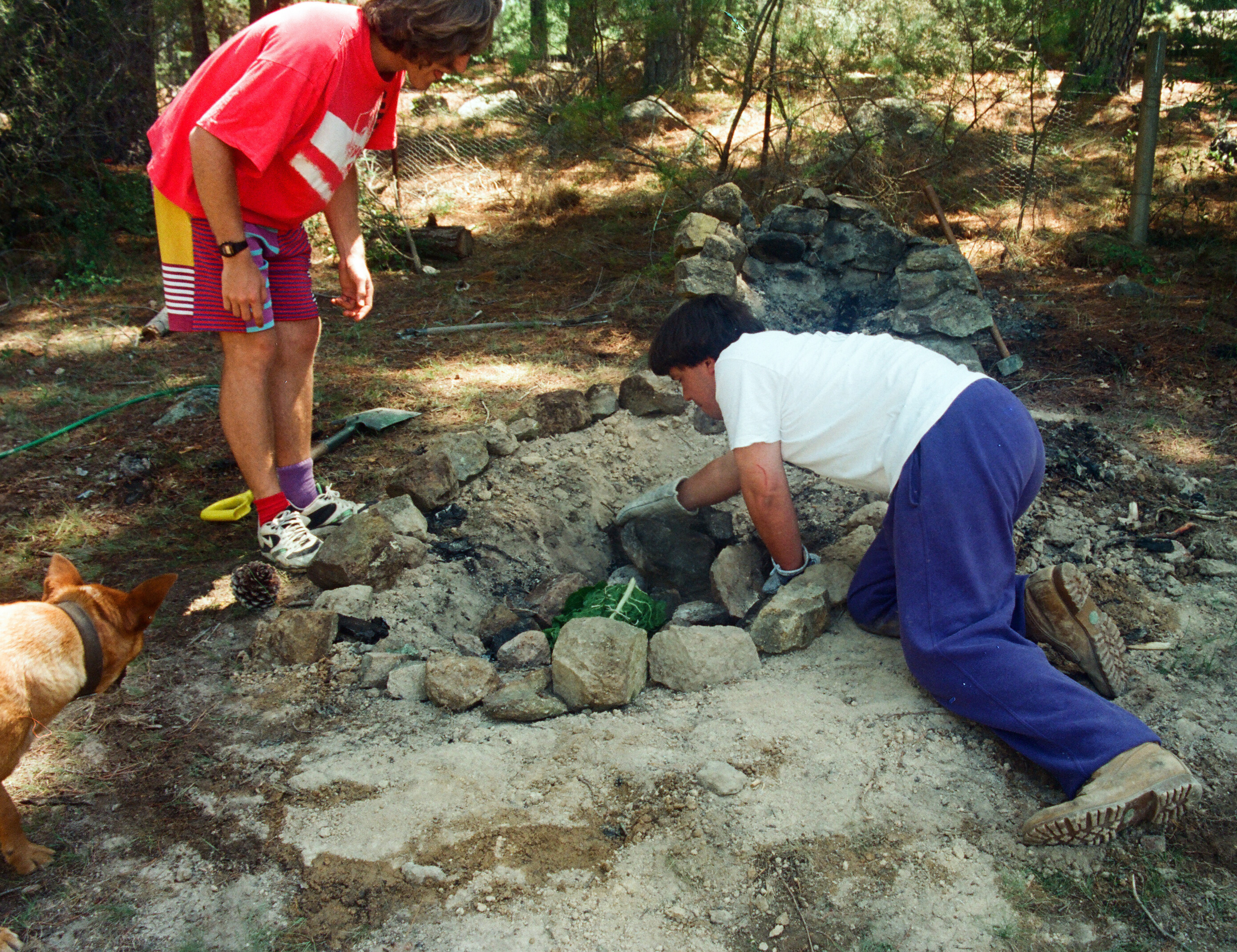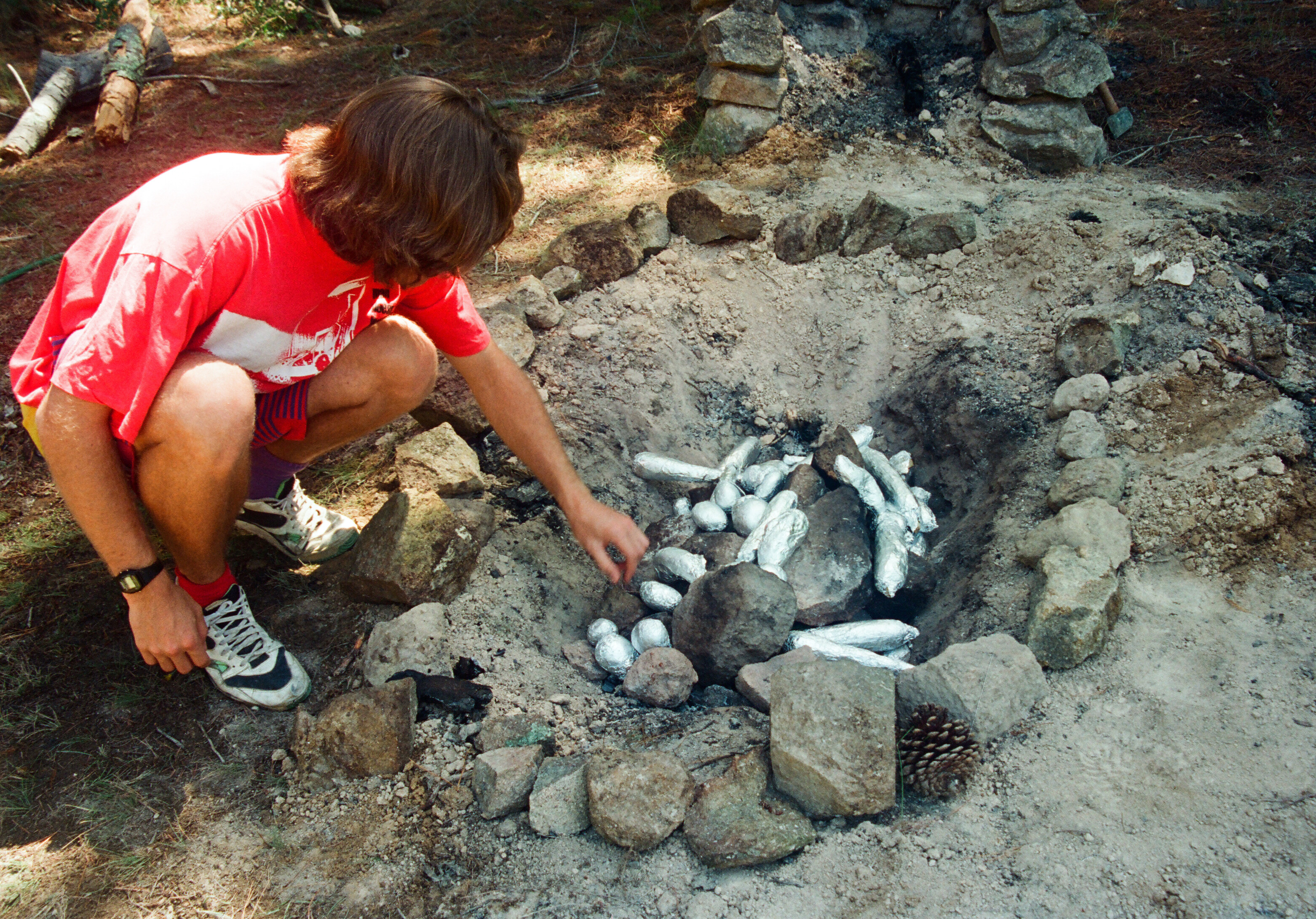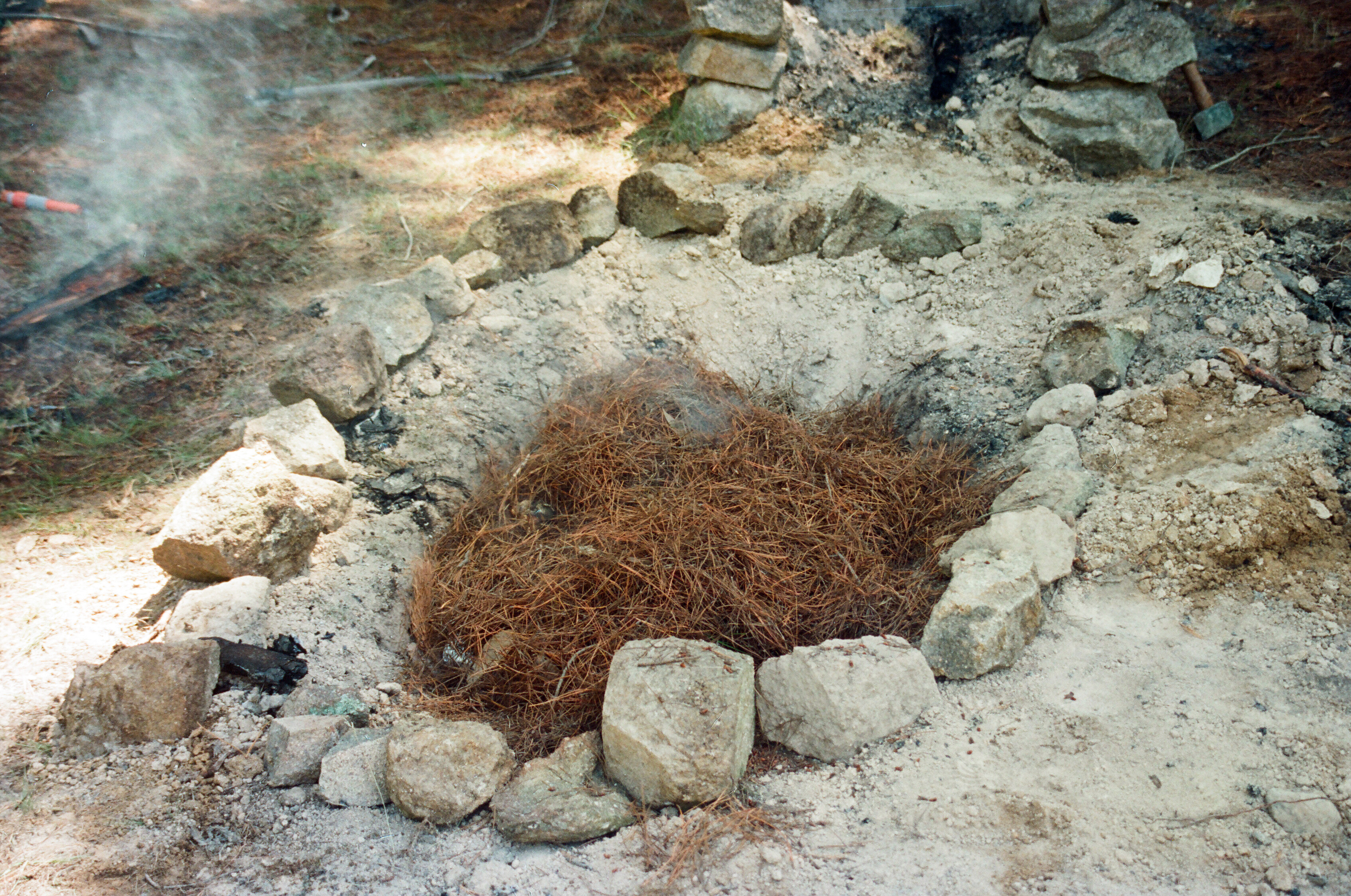 The term MUMU comes from Papua New Guinea and refers to both the earth
oven and the food that is cooked in it.
In 1994, we began with a test pit in the backyard.
There were two competing theories for how to proceed:
The term MUMU comes from Papua New Guinea and refers to both the earth
oven and the food that is cooked in it.
In 1994, we began with a test pit in the backyard.
There were two competing theories for how to proceed:
"That's the most disgusting thing I've ever seen." - Caroline Quinn, age 7
 The term MUMU comes from Papua New Guinea and refers to both the earth
oven and the food that is cooked in it.
In 1994, we began with a test pit in the backyard.
There were two competing theories for how to proceed:
The term MUMU comes from Papua New Guinea and refers to both the earth
oven and the food that is cooked in it.
In 1994, we began with a test pit in the backyard.
There were two competing theories for how to proceed:
Theory 1- The insulation theory: Get the rocks REALLY REALLY HOT, toss the pig in the hole and completely cover with leaves, dirt, etc, so that all the heat stays inside. You should be able to stand comfortably in bare feet on top of the pit because it's so well insulated. Pros: conserves energy. Cons: second-guessing is not an option.
Theory 2- The continuous combustion theory: Heat up the rocks. Lay in a pig.
Lay in some more rocks, maybe a few leaves and embers, and then keep
a fire burning over the top for the cooking period. Pros: You know
it stays hot. You can probably even reach in with a meat thermometer
when the fire burns down. Cons: this doesn't seem to be the traditional
way. Traditional people usually know more about this kind of thing than
people with "theories".
After Pit 20 Paul Maragakis added this
piece of folklore to our pit cooking
knowledge: In Greece, kleftiko is a traditional way of
cooking lamb in a pit (that was later trivialized to cooking in a pot or
in foil). The art developed from habits of thieves
(kleftes) in the mountains of Crete. The thieves would
prepare a hot pit before stealing the lamb or goat. Once the animal was
taken, it was quickly buried in the pit. The unlucky owners of the
animal could not locate the roast because of the lack of smoke during
cooking. The lucky thieves would have a feast once the fuss settled down
and the lamb cooked to perfection.
Pit 2: clearly another test was needed before attempting a pig.
We enlarged the pit
and ringed it with rocks. The second fire was stoked and burned for two hours.
With a hot rock inside, a turkey was wrapped in silver
beet leaves (no banana leaves could be obtained).
The turkey was placed in the hot rocks, covered with pine needle
insulation, and
buried for 8 hours with sweet potatoes,
corn, parsnips and potatoes and Theory 1 (insulation) was employed.
This was a great success. The turkey was cooked to perfection,
falling off the bone, but still moist and juicy. Vegetables had
about an 80% retrieval success. We're ready for a pig!
Warning
We switched to video technology for recording Pit 3. MPEG movies
may be a bit large and slow to retrieve.
Pit 3 The Pig:
A pig weighing 13kg (28.66lbs) was prepared by rubbing it with mango
and placing some onions and spices in the interior
[MPEG].
The pig must have had a run in with Mr. Blonde, since it only had
one ear.
A REALLY BIG fire was built in the pit, and
we heated granite rocks in it for 3 hours.
We
took three really hot rocks
from the fire and
stuck them inside the pig then wrapped it tightly with banana leaves
[MPEG].
Putting the hot rocks inside the
pig is really cool. Lots of smoke and sizzling sounds.
Sort of like a giant "sizzling
pork" dish at Full House.
Next the wrapped pig was placed in the pit with hot rocks and embers.
A layer of grape
vines, then pine needles was used to insulate the pit
and you can see the steam coming up through the pine needles
from the hot rock oven underneath
[MPEG].
The whole thing was covered with dirt and cooked for 11 hours.
[MPEG].
Around hour 8 we uncovered it to add vegetables. The pig appeared done at
this point, but we covered it back up anyway.
When the guests arrived, we dug up dinner
[MPEG1] and
[MPEG2].
The pig was good, but the vegetables were not done.
We are still working out how to
cook the veggies (which need about 3 hours if the rocks are hot) with a
pig/turkey/kangaroo that needs about 8-12 hours. Some suggestion are:
There were two extremely memorable parts: when the cooked pig was on
the kitchen table, we were moving it around to try to make more space.
As we moved the body, the head stuck over edge of the table....PLONK!!
(sounds of screaming) pig head on floor, one grad student in need
of sedatives. Joy of Cooking forgot to mention: "The roast is done
when the head falls off under its own gravity."
The second "moment" came a few minutes later. Some dirt had gotten
through the leaves and we were trying to figure out how to clean it.
Lynn had the great idea to use the
vacuum cleaner. But the highlight
was when the tail got ripped from the body and sucked into the vacuum
cleaner.
Otherwise it was a perfectly normal meal for about 16 people.
Pit 4 The Lamb.
Team Mumu moved on to the "two pit theory", one 12 hour pit
sufficient to cook a 20kg (44lb) lamb, and one 6 hour pit for the 30kg (66lb)
of vegetables. This worked exceptionally well, and both lamb and
vegetables were done when the guests arrived. For additional
variety, a stuffed chicken was placed inside the lamb.
Note that both John and Dave are wearing sandals while digging up dinner.
Safety first :-)!
 We wanted to get to a 9pm film, so Pit 1 was a "quick pit".
After a brief fire, one leg-o-lamb, some sweet potatoes and corn
were placed in a pit with hot rocks and Theory 2 (continuous combustion)
was applied.
After 3 hours the veggies were excellent, but the lamb was
still a bit pink and got a some help from the indoor kitchen oven to finish.
We wanted to get to a 9pm film, so Pit 1 was a "quick pit".
After a brief fire, one leg-o-lamb, some sweet potatoes and corn
were placed in a pit with hot rocks and Theory 2 (continuous combustion)
was applied.
After 3 hours the veggies were excellent, but the lamb was
still a bit pink and got a some help from the indoor kitchen oven to finish.
Time for library (and internet) research
You searched for the WORD: pig roast "ANU Library Catalogue"
TITLE A dissertation upon roast pig.
AUTHOR Lamb, Charles, 1775-1834.
PUBLISHED London : Sampson Low, Marston, [n.d.]
DESCRIPT 62 p.
MENZIES rare book Mortlake Collection






Pit Summary:
General info for succesful mumus:
Brought to you by Team Mumu